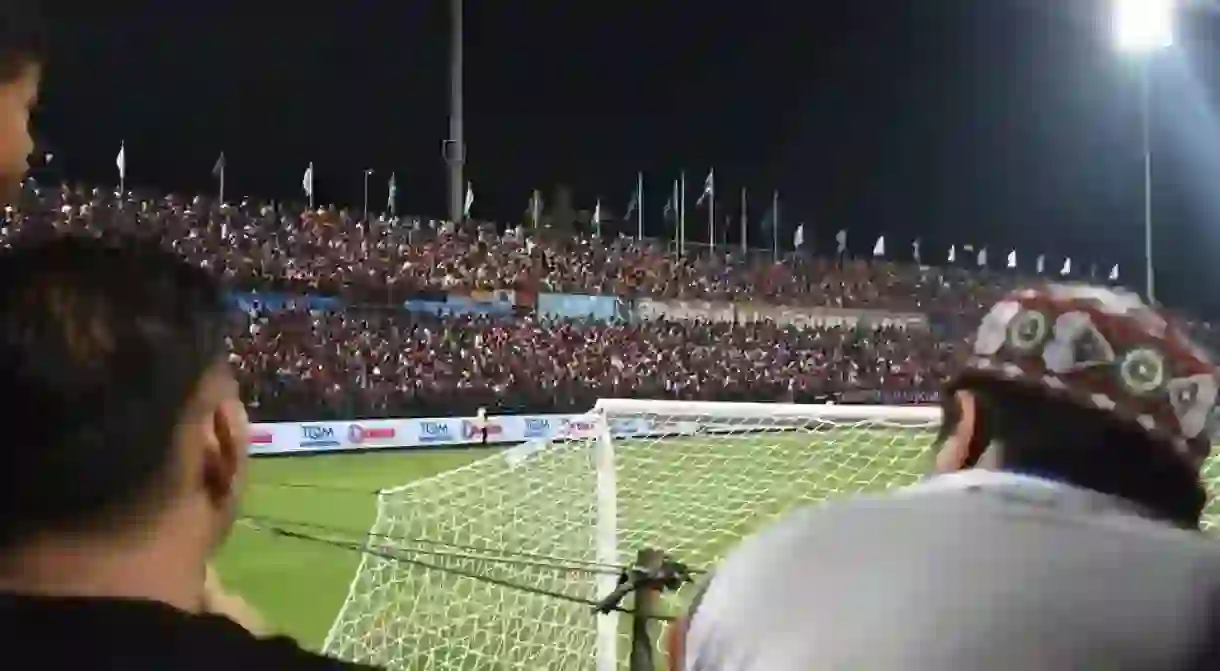Exploring Thailand's Flourishing Football Fan Culture

Down by Bangkok’s dockside, a football revolution is happening. Drawing its support from Khlong Toei – a working class district on the city’s waterfront – the orange and blue-clad fanatics of Port FC are one of the driving forces behind a burgeoning football fan culture that has gathered pace in Thailand in the past decade.
Introduced in 1897, football was first formalised in Thailand in 1916 when the regally named Football Association of Thailand under Patronage of His Majesty the King came into existence. However, while football soon established itself as the most popular sport in this Southeast Asian Kingdom, Thailand has remained a peripheral and inconsequential figure in the world game in the intervening century. But this looks to be changing.

The War Elephants, Thailand’s national football team, has reached three successive ASEAN Football Championship finals (winning two) and were the only Southeast Asian representative at the third round of Asian qualification for the 2018 World Cup. Locally, the picture is looking promising too. Since 2007, an overhaul of the domestic game has seen the highest level of Thai football evolve from a Bangkok-based semi-professional league to the nationwide professional Thailand Premier League capable of attracting big foreign names to its clubs.

This emergence on the pitch has sparked a flourishing fan culture off it. Port FC are one of a number of Thai football league teams, alongside Chonburi FC, Bangkok Glass FC and Muangthong United FC, all of which now boast a sizeable, loyal and vocal fan base at their games. This is a relatively unprecedented phenomenon in a country with a culture of regularly re-branding and uprooting its teams.

Port FC regularly attract close to capacity crowds at their 12,000-seater PAT Stadium, one of Thailand’s few atmospheric, purpose-built football grounds complete with 19-metre pitch-side portrait of King Vajiralongkorn. Most conspicuous among the throng are the club’s ultras – its hardcore supporters.
Drawing inspiration from their European counterparts, the scarf swirling ultras, sporting Stone Island clothing, a favourite among British hooligans, bounce in unison to the beat of two drummers. With vigour and energy, they diligently follow the lead of the chant leader standing front and centre, barking instructions through a megaphone, never once turning to watch the action unfolding behind him.

While this all sounds standard fare among global ultra culture – most commonly associated with young men engaging in excessive drinking, violence and rowdiness – here, this subculture takes on a uniquely local flavour.
Consistent with Thai society, in which public displays of aggression are highly frowned upon, the atmosphere remains impeccably hospitable. Visiting teams enjoy a warm welcome rarely seen from home fans inside football grounds worldwide; outsiders are embraced into the inner sanctum of Port FC’s ultras behind the goal in the New Stand, reserved for only the most enthusiastic.
Symptomatic of this family-friendly atmosphere is the unusually high number of women and children in attendance.

Supporters stream into the streets with the sound of the final whistle, but the ultras continue in their revelry, undeterred by the emptying stadium around them. ‘We are Tha Ruea … we cheer Tha Ruea’, they bellow.













